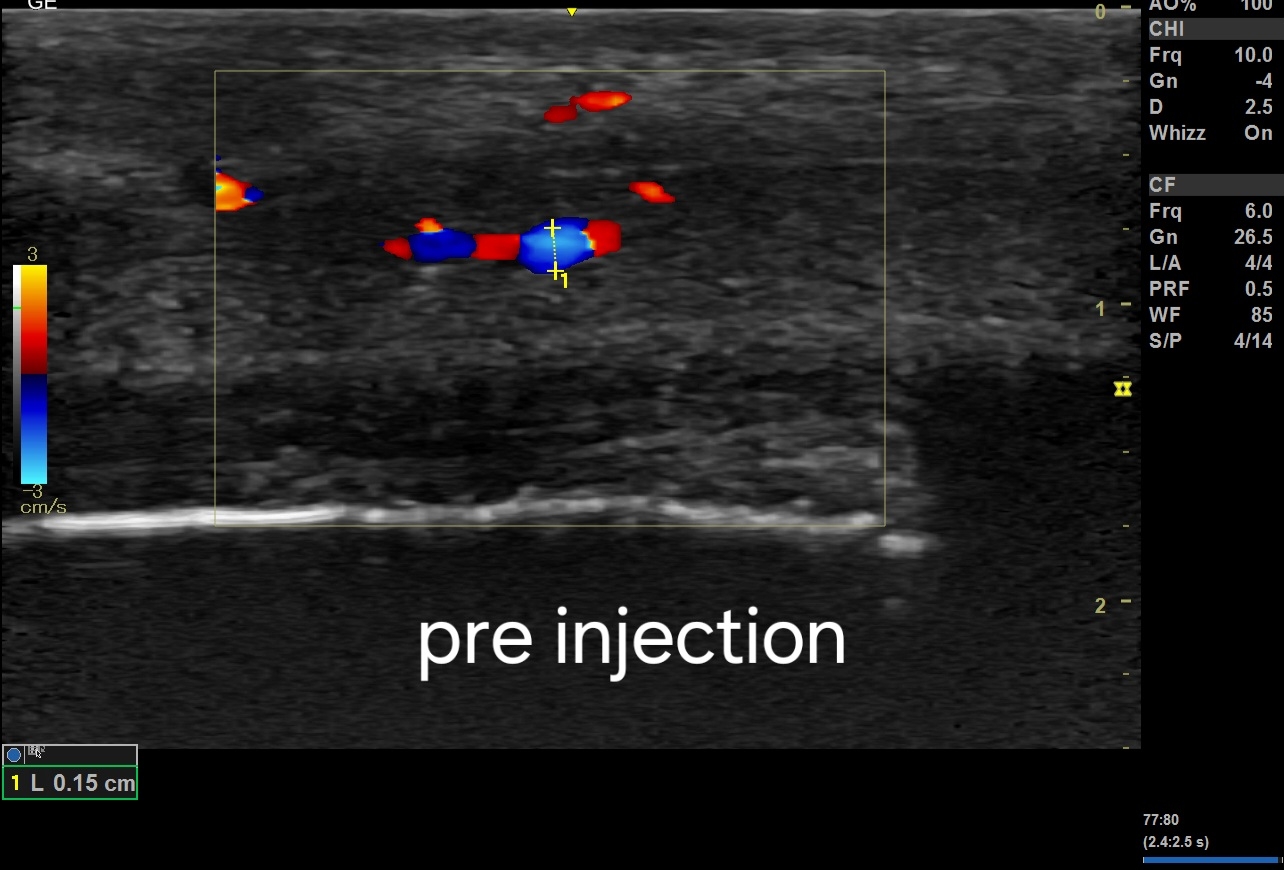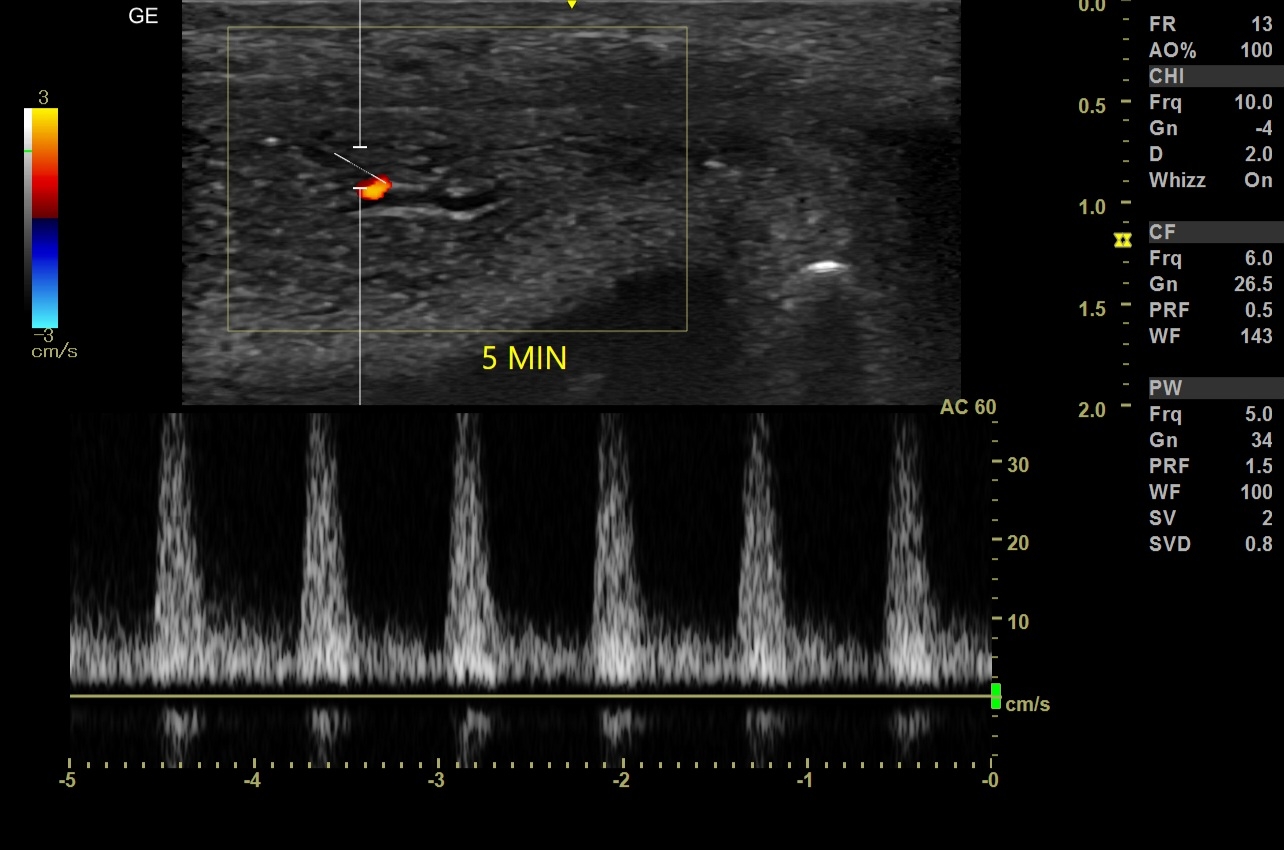- Penile Doppler ultrasound emerges as a crucial tool in unraveling the complexities of erectile dysfunction (ED), providing insights into vascular dynamics that underpin the condition.
2. Pre-Papaverine Injection Doppler Findings:
- Blood Flow: Initial examination reveals a modest PSV of 10 cm/s in cavernosal arteries, indicating baseline arterial blood flow before the vasodilatory effects of papaverine.
- Cavernosal Artery Diameter: Preliminary observations note a gradual increase in cavernosal artery diameter, setting the stage for the subsequent response to papaverine.
3. Post-Papaverine Injection Doppler Findings:
- Peak Systolic Velocity (PSV): The introduction of papaverine prompts a remarkable escalation in PSV values within cavernosal arteries, reaching a robust 48 cm/s, reflecting the potent vasodilatory effect.
- End Diastolic Velocity (EDV): A concurrent increase in EDV is observed, underscoring improved venous drainage, culminating later in a plateau at 0, attesting to optimal erectile hemodynamics.
4. Spectral Doppler Analysis:
- Pulsatility Index (PI) and Resistive Index (RI): Pre-Papaverine injection, PI and RI values are within normal ranges. Post-injection, the vasodilation is evident in the harmonious arterial blood flow pattern, corroborating the escalating PSV.
- Acceleration Time (AT): The vasodilatory response contributes to an adequate AT, mirroring the gradual increase in PSV within cavernosal arteries.
Low PSV : Pre-Papaverine injection:
5 minutes after papaverine injection:
EDV and PSV increase:
5. Absence of Vasculogenic Causes:
- Arterial Insufficiency: Despite the initial modest PSV, the vasodilatory response to papaverine alleviates concerns, affirming unobstructed arterial conduits and optimal cavernosal artery dynamics.
- Venous Leak: The maintained erectile response post-injection dismisses concerns of venous leakage, aligning with the observed EDV dynamics.
6. Management Approach:
- Psychogenic Causes: Delve into psychological contributors alongside the observed vascular dynamics, considering therapeutic interventions like counseling or psychotherapy.
- Lifestyle Modifications: Advocate for holistic lifestyle changes, supporting enhanced arterial responsiveness post-papaverine injection, and addressing potential non-vasculogenic etiologies.
- Medications: PDE5 inhibitors may be considered judiciously, aligning with the observed cavernosal artery responses.
7. Follow-up and Monitoring:
- Vigilantly monitor ED symptoms, gauging the response to interventions, and consider iterative Doppler ultrasound assessments to track evolving vascular dynamics post-papaverine injection.
8. Collaborative Care:
- Forge a collaborative alliance with urologists and psychologists, orchestrating a multidisciplinary approach tailored to the patient's nuanced needs, considering the observed pre and post-papaverine injection dynamics.
- Customize interventions based on individual responses, ensuring a patient-centric therapeutic journey informed by the evolving PSV and EDV dynamics.









No comments:
Post a Comment